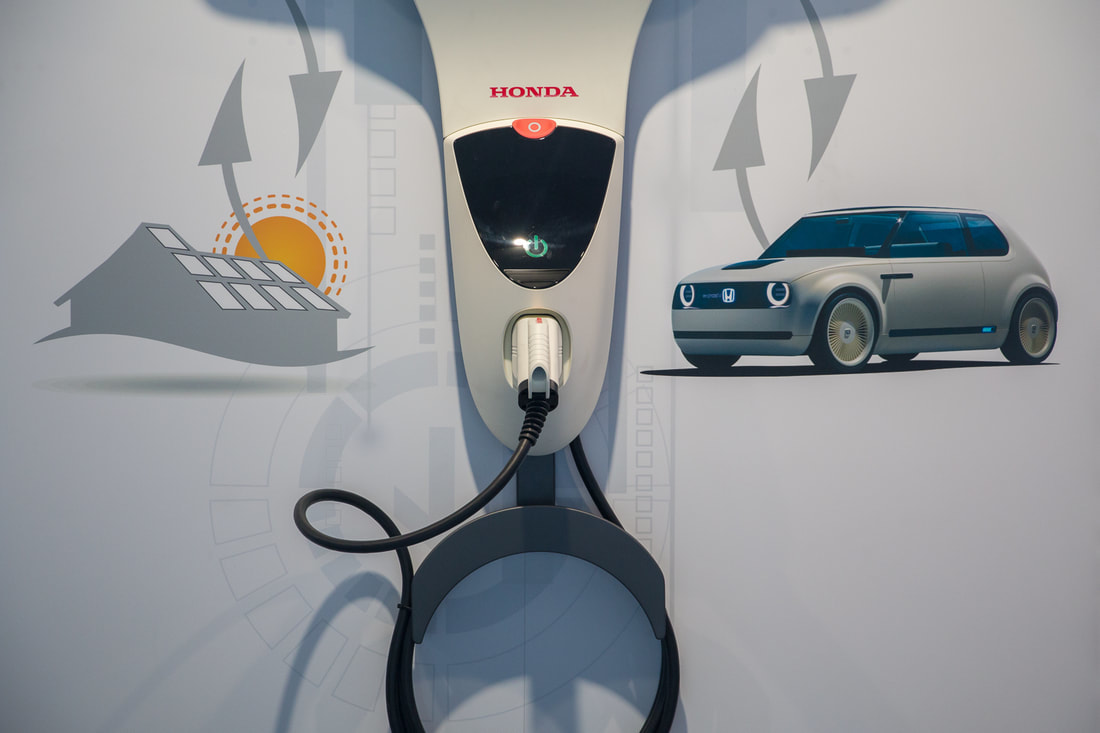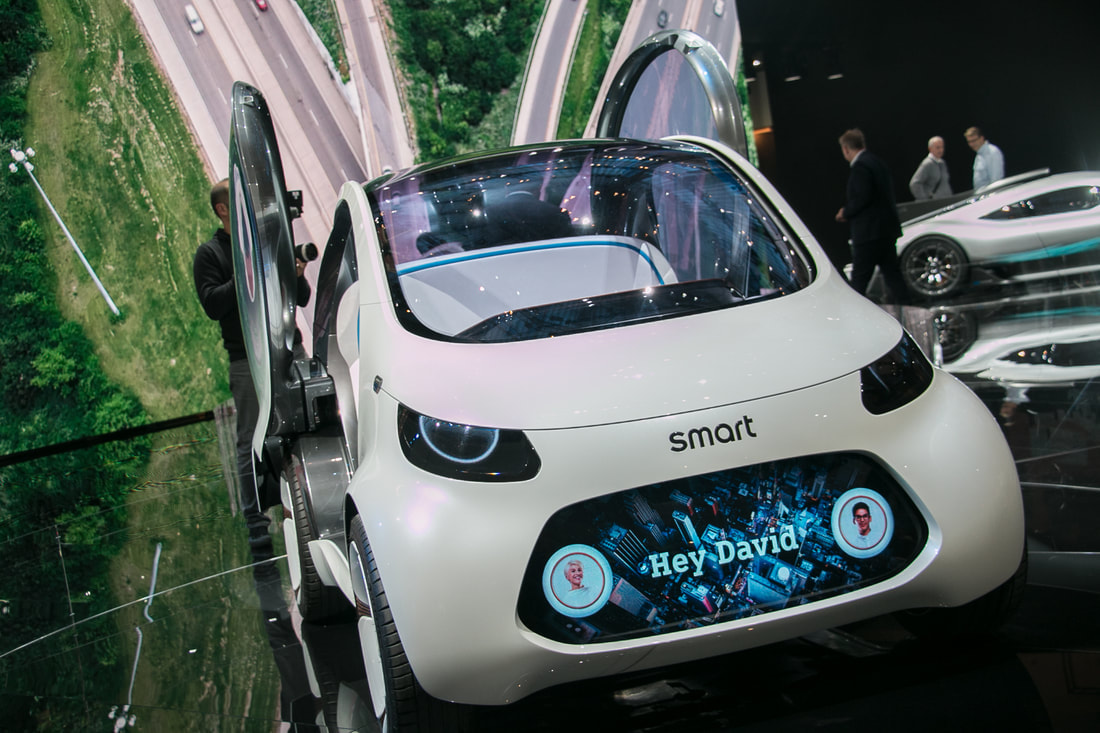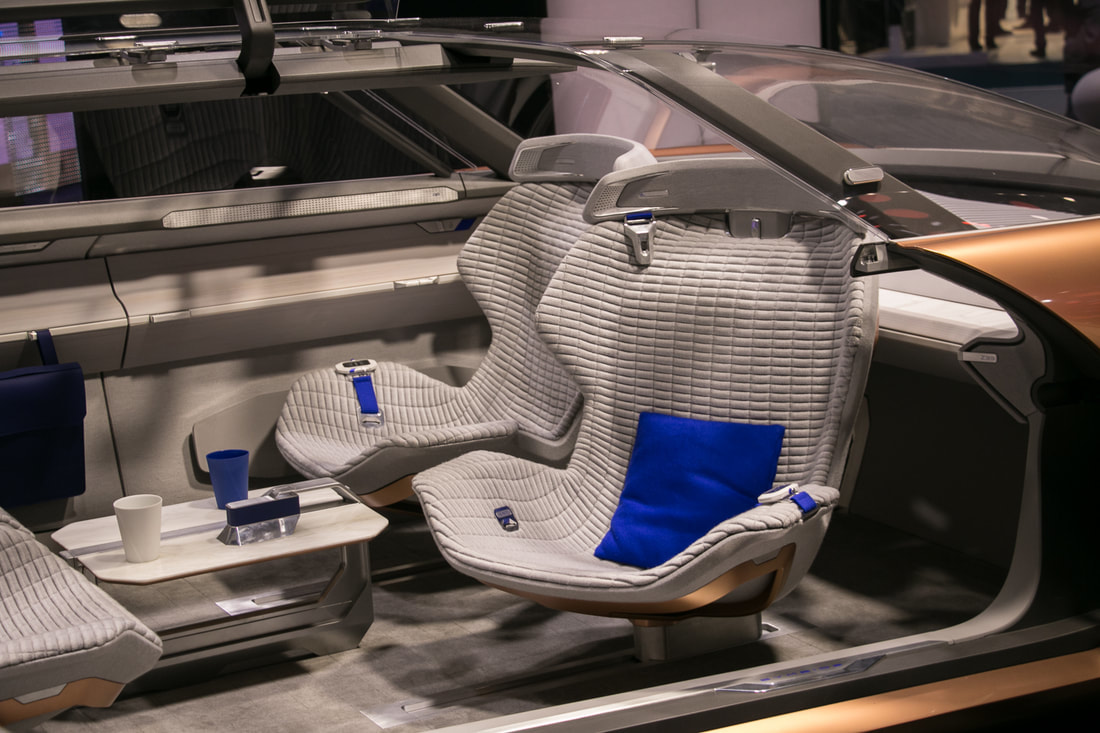The study2025 Automotive 360º VisionIt is not a crystal ball, but it is a tool that anticipates tendencies of evolution in the automobile sector and mobility. This time we want to share with you some of our impressions for next year, while we take the opportunity to wish you a great 2018.
Today we all have access to a lot of information, very quickly. Studying new trends in this context is, above all, a matter of focus, agility and information management capacity. Then, cross-analysis must be carried out, producing differentiated contents that add value to what already exists. This is how, day after day, we are building the largest Iberian study of its kind, a tool to help automotive professionals, investors and entrepreneurs to identify new opportunities in disruption.
Below, we present some of our forecasts for 2018, in three of the main disruptive axes: Electrification, New Mobility Concepts and Artificial Intelligence and Connectivity.
Electrification
During the next year, Bosch and Toyota will introduce new solid-state batteries with an energy density of up to three times the current lithium-ion batteries. These accumulators allow autonomies of the order of up to 600 kilometers (in vehicles of segment C), with recharges in 15 minutes and greater security. The commercial launch will occur from 2020.
Tesla will increase the pace of production of the Model 3 but should not reach the 500,000 units planned for 2018. The pre-sales of the second-generation Tesla Roadster and the Tesla Semi will finance the increase in the pace of production of the 3 and prolong the confidence of the investors during the next year.
More builders will continue to announce electrification goals for the next ten years. The Mild Hybrid 48 V system – already available in the Renault Grand Scenic Hybrid Assist, in several Suzuki models and in the Audi A8 range – will be extended to more vehicles by 2018, mainly in Europe. Until 2021, this system will be adopted massively so that internal combustion vehicles meet the emissions targets set for that year (95 g CO2 / km), in a progression similar to that of the Start-Stop.
Main European launches of 100% electric vehicles in 2018: Aston Martin RapidE, Audi e-tron quattro, Jaguar I-PACE, Peugeot 208 BEV (concept), Hyundai Kauai EV, Kia Niro EV and Porsche Mission E (production version).
In 2018, diesel engines will continue to be a good purchase option, mainly for heavier vehicles that perform a greater number of kilometers. In Europe, in segments B and C, this type of thruster will tend to be replaced by gasoline, hybrid and electric engines.
New mobility concepts
The original Ride-Sharing format consists of a technological solution that connects drivers with free seats in their cars and people looking for a mobility solution from point A to point B. Equalization of Ride-Sharing platforms to Transport services in Europe, could slow the pace of the advance of this initial concept, but these platforms will remain true to their DNA: incessantly pursue the opportunities of technological evolution to provide a mobility solution that meets the new needs of customers . The investments of Ride-Sharing in the domain of Autonomous Vehicles is an example of this positioning. It is clear that taxi companies can also and, in some cases, are already pursuing these routes, but clearly do not have the attitude or the means of a technology company. In addition, the aggressive entry of OEMs in mobility services, with their own structures or through strategic acquisitions, using vehicles specifically designed for Ride-Sharing, will cause, until 2025, a strong transformation in the traditional taxi industry.
Uber will have to persevere in 2018 in its image recovery strategy. Meanwhile, it is likely that it will reduce its losses, although we do not foresee that in 2018 it will be in benefits.
Ride-Sharing – in its individual and collective version (Ride Pooling) – will be one of the most profitable modalities in the field of new mobility concepts. na sua versão individual or collective (Ride-Pooling) – should continue to be one of the modalities mais rentáveis no two-tier novo conceitos de mobilidade. In addition to GM, Ford, Volkswagen Group, Daimler and BMW we will assist in the launch of new Ride-Sharing services by other OEMs.
In the Car-Sharing the margins continue to be very small and that is why the new mobility services arise from agreements between vehicle suppliers and new mobility players, as is the case of Zity, in Madrid, an alliance between Renault and Ferrovial. The Ridecell platform that provides the management software for these car-sharing services must conclude more agreements in 2018. Note that the Portuguese Mobiag also acts in this market area.
In addition, Cadillac, Lincoln, Ford, Porsche and Hyundai new OEMs must present Subscription services in 2018.
In general, OEMs will continue in 2018 trying to occupy the space of new mobility concepts, such as the new Toyota Mobility Service formula.
In urban areas the purchase of vehicles in property will continue to fall against the solutions of “Car-as-a-Service”. In 2018, the renting will grow in the segment of individuals and the financial products of “cycle of change” will increasingly be a purchase option in property.
Artificial Intelligence and Connectivity
In 2018, we will continue to have tests for Level 5 Autonomous Driving Vehicles (VCA L5), such as the Navya in Las Vegas. These tests will continue to take place in controlled environments, which means that we will have VCA L5 that will be tested under the conditions provided for the circulation of VCA L4.
Waymo, Uber and other operators will continue to conduct public testing of VCA L4. No constructor is expected to launch a VCA L4 in 2018.
The first tests of VCA systems developed for its after-sales assembly (for example X-Matic) will be carried out next year.
In 2018 Germany is likely to be the first European country to apply regulations that allow VCA L3 circulation on public roads.
The new generation of the Audi A6 will be launched in 2018. The use of the MLB platform of the A8 should allow the new A6 to inherit the VCA L3 technology from the larger model.
Tesla’s AutoPilot Enhanced must acquire L3 competencies in 2018.
In 2018, there will be more OEMs that will adopt voice control systems assisted by artificial intelligence. By mid-year BMW will have Alexa on all BMW and MINI models, in the United Kingdom, the United States and Germany. Daimler will also expand the Ask Mercedes to several markets.
There would be much more to say about the forecasts of evolution of the car and mobility next year. If you wish, you will find much more information, permanently updated, about trends and new opportunities for the next years in the study2025 Automotive 360º Vision.
Meanwhile, you can already sign up for the biggest Iberian innovation event in the automobile and mobility sector, theWorld Shopper Conference Iberian 2018!



